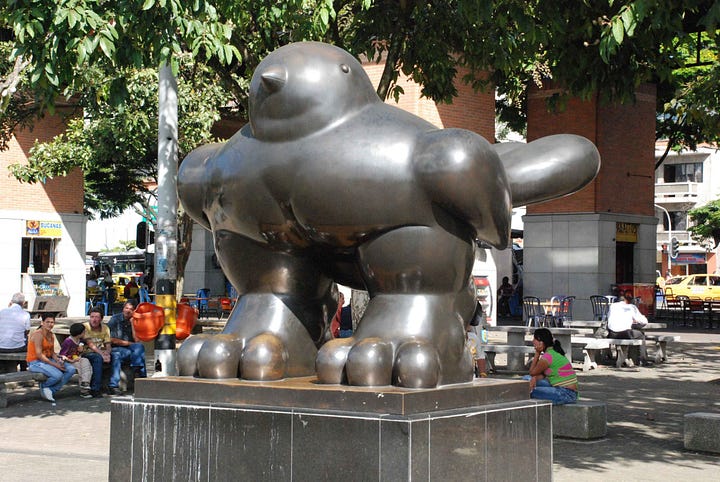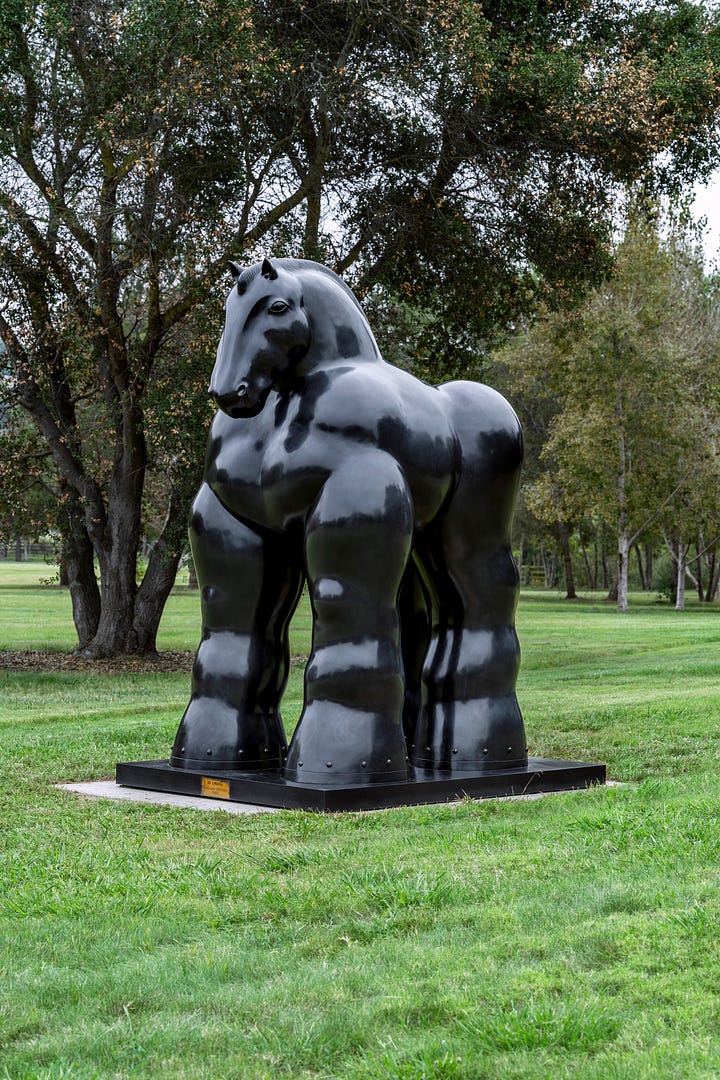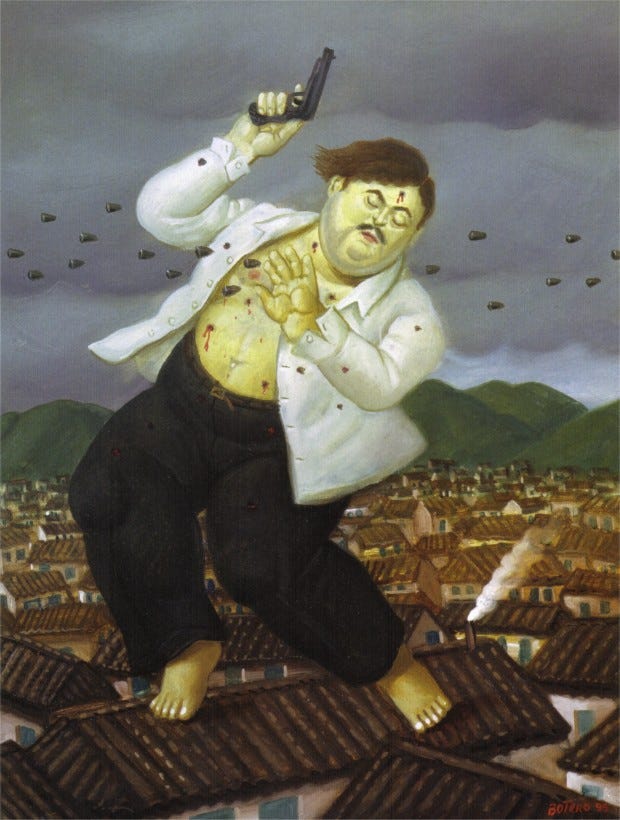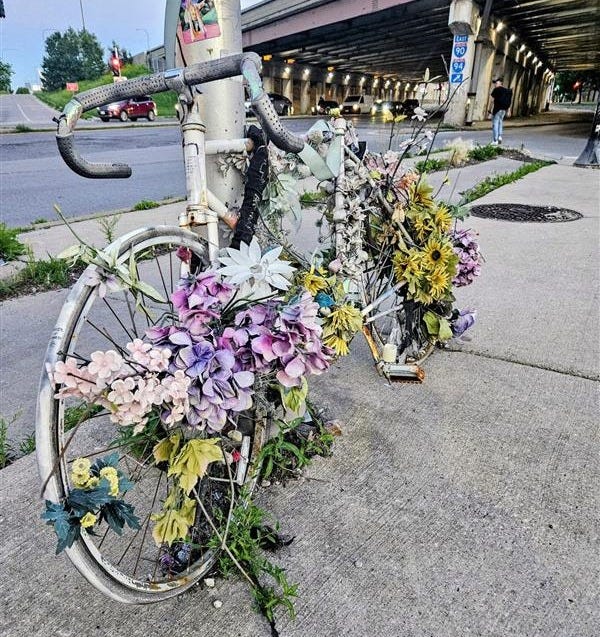I Hope This Helps 👍🏽: Desire Paths, Bike Lanes and Boterismo
‼️Parking reform is on deck in Chicago‼️ Also, several articles from the In Practice Substack in this edition of I Hope This Helps👍🏽!
Welcome to I Hope This Helps, a weekly (ish) roundup of tidbits I’ve encountered that furthered my thinking about cities and life. From sustainable transportation to housing, to design, and the social forces shaping our daily lives, I take a broad lens in this review. Whether you're a planner, advocate, or just curious about the world around you, I hope you’ll find something here that resonates. Take what helps. Leave what does not.
1️⃣The Wisdom of Desire Paths
This image above is a desire path I came across in Warren Park on the north side of Chicago.
Desire Path (n) - Also called a desire line, social trail, or goat track. An informal trail or shortcut that pedestrians create by walking along the most convenient or preferred route, rather than the one officially designed or paved. These paths usually emerge in parks, campuses, and urban spaces when people consistently cut across grass, dirt, or landscaping to save time or distance.
Desire paths are insightful social artifacts that highlight how people actually interact with space. These paths have such a cultural following that there is an entire subreddit (r/DesirePath) where users post images of desire paths they encounter in the wild. While some places do everything they can to stop desire paths once they start to form, these de facto routes present a powerful tool for real-time community feedback. They represent the path of least resistance. Instead of attempting to stop people from using desire paths, formalize them. Michigan State University used this approach to place their footpaths way back when, and they still stand today!
2️⃣Effective Policy Must Be Understandable
This article from the In Practice Substack drives home a point that policy wonks (myself included) need to heed. If we want broad based support for policy reforms, we need to message them in a way that’s easily understandable. An excerpt:
Here’s the paradox: most policies get less popular the more complex they appear. Housing is popular, actually — but ideas like reforming floor-to-area ratios are not, because what the f*** even is that?1 There is a confusion penalty — the more complex a question is, the more people will vote no. (This is the politics version of a common issue in tech. Don’t ask your customer for their solution, ask them for their problem.)
3️⃣Bike Lanes are Good, Actually
In 2020, when public transit in my city began its slow decline, I started riding my bike to get around town. Initially, I used the city’s bikeshare system to get around, but once I realized that I was in this for the long haul, I purchased my own fixed-gear bicycle and I haven’t looked back since.
This video from the flurfdesign Youtube channel, which does a great job of summarizing the benefits of cycling, stated that cycling is the best mode of urban transportation. After riding for the past 5 years, I can’t agree more.
Bikes are incredibly space efficient (see less congestion)
Bikes have myriad public health benefits
The cost to own and operate a bike is much lower than that of cars
Bike infrastructure is much cheaper to build and maintain than roadway infrastructure
Safe cycling infrastructure allows children to lead more autonomous lives from a younger age
The worst emissions from cycling come from the burrito I had before hopping on the saddle
Bikes allow people to interact with the world around them much more intimately than cars
The major drawback to cycling is safety from drivers in cars. If you’ve ever seen a bike painted all white along the side of the road, that’s called a ghost bike.
Ghost Bike (n) - a bicycle roadside memorial, placed where a cyclist has been killed or severely injured, usually by the driver of a motor vehicle.
Every year, on the third Wednesday of May, cyclist across the world gather for a national ride of silence to remember the cyclists that have lost their life trying to get to where they need to go on their bike.
Fortunately, we have a proven solution to make cycling safe; the protected bike lane.
Protected Bike Lane (n) - Bike lanes separated from general-purpose travel lanes with both a buffer and a vertical element, such as a median, curb, or planter box. Protected bike lanes can decrease risk by 90% when compared to a major street with no cycling infrastructure.
Sharrows and painted bike lanes provide political cover and the illusion of safety. Protected bike lanes provide actual safety and serve as the bedrock of a truly safe cycling network. When elected officials rally against (or water down) cycling infrastructure, they’re defending the status quo over a future that is safer, greener, more affordable, and more accessible.
4️⃣Politicians Rarely Lie…
This article from the In Practice Substack talks about how politicians often employ a tactic called “Strategic Ambiguity.” Basically, making claims that feel sincere, but are intentionally non-binding. Bike lanes are a prime example where politicians employ strategic ambiguity. Many politicians claim to support safe cycling infrastructure, but when it comes to implementation, sharrows and painted bike are the best we can get. Housing is another place where we see a lot of strategic ambiguity employed. Here’s an excerpt from the article:
I do believe that the politicians trying to give me these private reassurances are pro-housing “in their hearts.” I just don’t agree that that’s worth anything. Because voting on legislation doesn’t take place in the heart — it takes place in the public eye. At the end of the day, these private reassurances are worth the imaginary paper they’re deliberately not written on.
‼️Action Item: Parking Reform in Chicago‼️
The Zoning Committee of the Chicago City Council has added parking reform to its agenda for today, Tuesday, 6/17. This ordinance would extend parking relief options to RS and RT zoning districts (RS = residential single family housing, RT = residential mixed use, 2 to 4-flats, townhouses, etc.) at transit-serviced locations. It would also remove the need to get an administrative adjustment to achieve zero parking. If you live in Chicago, email your Alderman and tell them to support this legislation as it moves through the process.
Here’s a great article that talks about why parking minimums are detrimental to cities. Here’s a Youtube video if you prefer multimedia content!
🐲A Moment for Whimsy
Whimsy (n). - capricious humor or disposition; extravagant, fanciful, or excessively playful expression
In this week’s moment for whimsy, Boterismo! Fernando Botero Angulo was a Colombian figurative artist and sculptor. His signature style, also known as "Boterismo", depicts people and figures in large, exaggerated volume, which can represent political criticism or humor, depending on the piece. Here’s a gallery of some of his works. If you’re ever in Medellín, Colombia, make sure to check out the Museo de Antioquia in the Plaza Botero!




Thanks for reading! I’m doing research for an article about the urban planning space generally and could use your help. If you work in urban planning or an urban planning adjacent field, or you live in a city and care about how it functions, please take a minute and fill out this 5 minute survey and pass it around your networks. Thanks in advance!
» Survey Link «
I’m a transit planner by day. If you want transit service in your area to be better, but don’t know how to make good transit service, check out the Transit Planning 101 section of my page!






